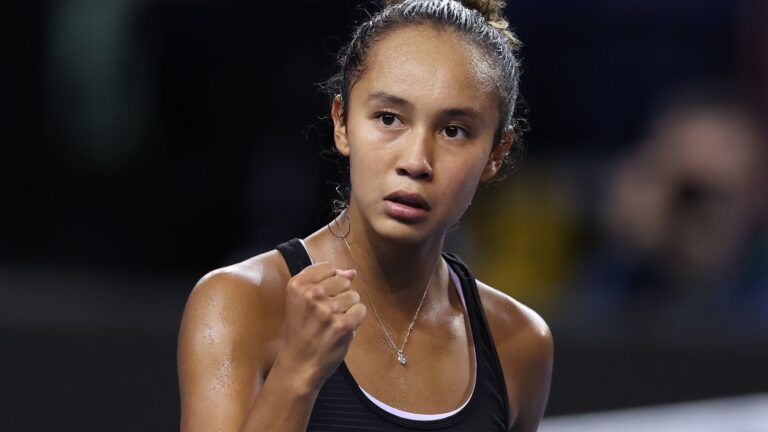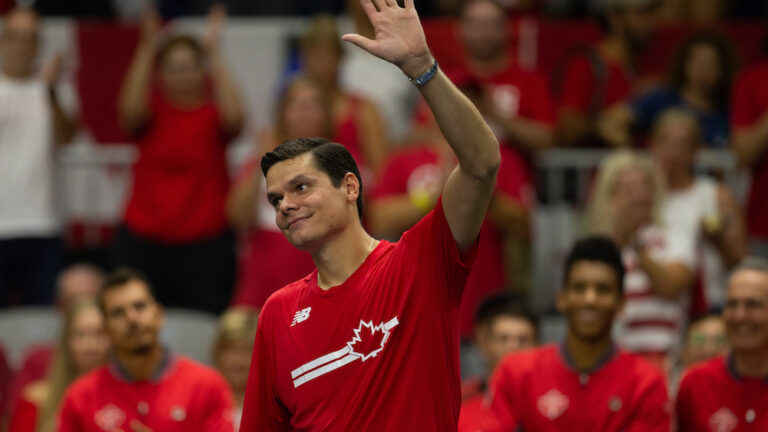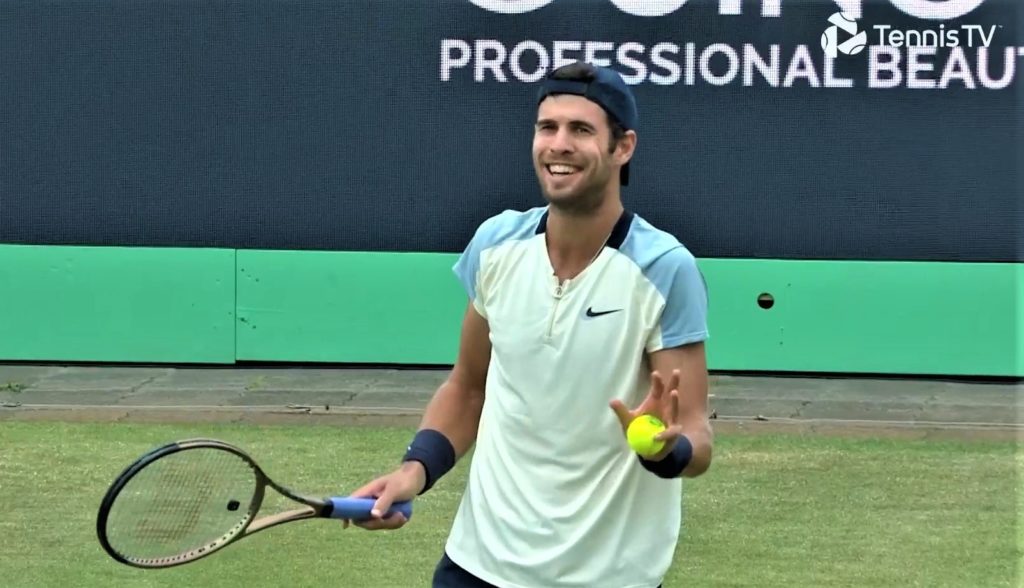
Photo: TennisTV
Much has been written about the Hawk-Eye and Foxtenn electronic line-calling systems that have slowly but surely relegated linespersons to the locker room.
The technologies’ accuracy and microscopic margin of error are universally recognized.
On April 27, I had only good things to say about Foxtenn’s real bounce system.
But on June 10, the Barcelona-based company took a bit of a beating in a quarterfinal match on the grass in ‘s-Hertogenbosch.
And when it did, it was to Félix Auger-Aliassime’s advantage and at Karen Khachanov’s expense.
The first replay was stopped even before viewers could see the ball hit the ground, but it didn’t take an eagle eye to predict it would be out. Still, to Khachanov’s stunned dismay, Félix’s shot was called in.
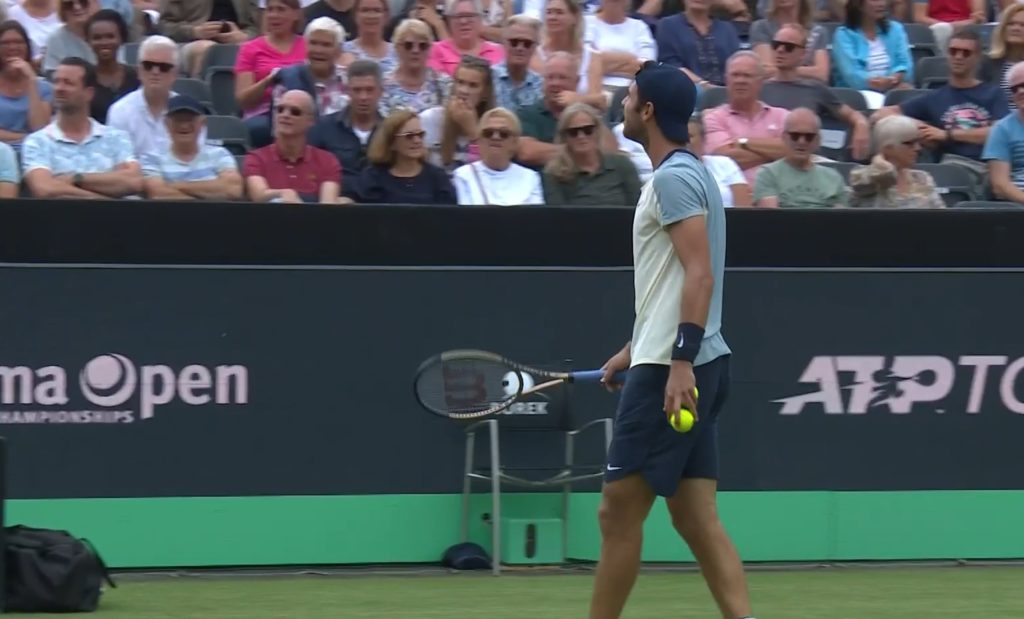
The next incident proved totally embarrassing for Foxtenn: the ball touched the ground beyond the line, but the digital call was in—a contradiction as remarkable as it was mortifying.

Since Foxtenn’s marketing centres on the fact that the technology relays real images, how is it possible to hand down a call based on a digital view that clearly involves some margin of error?
There’s no way to know whether Khachanov would have won the first set (which went to Félix, 7-6 [5]) without the blatant errors, but it’s understandable that the Russian ace would have been bothered and frustrated by the inaccuracies.

There’s no doubt that Foxtenn’s IT specialists and engineers were hard at work refining the technology the very next day.
Indeed, the extreme precision of the device is Foxtenn’s trump card. Knowing that Hawk-Eye also provides thousands of statistics, the real bounce technology ought to be really, really accurate and really, really indisputable.
A Dutch fairy tale
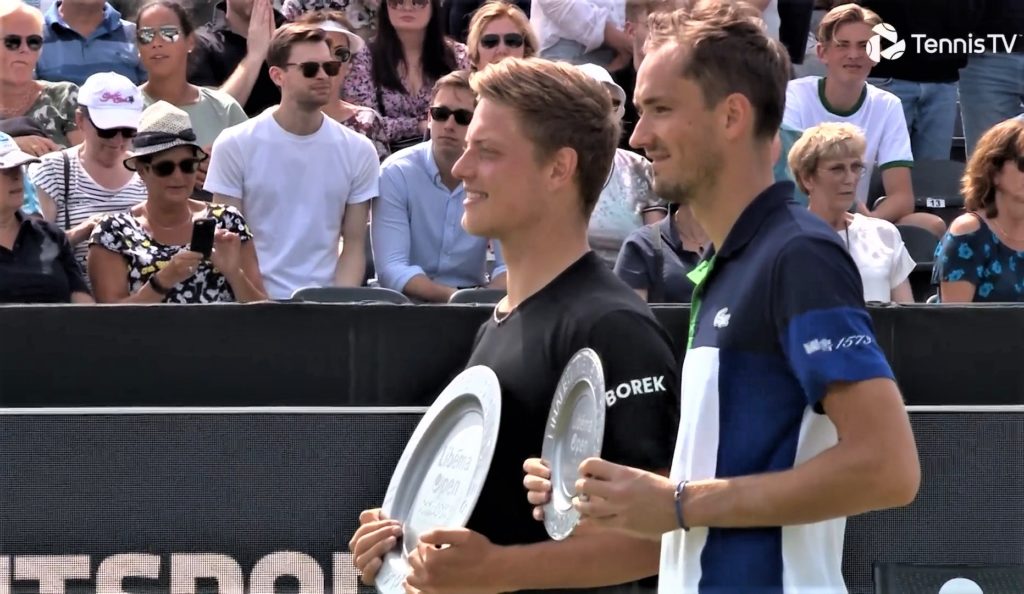
A delightful fairy tale was written in the Dutch town of ‘s-Hertogenbosch.
Tim van Rijthoven, a relative unknown outside the Netherlands, became a national hero when he took the top honours at the local ATP 250 tournament.
In the most incredible week of his career, he defeated the third, second and first seeds, namely Taylor Fritz (No.14), Félix Auger-Aliassime (No.9) and Daniil Medvedev (No.2), in that order. Just a few hours before he ascended to the very top of the rankings once again, Medvedev was outmaneuvered by the homegrown hero (6-4, 6-1) in just 65 minutes in front of a euphoric crowd.
The title helped van Rijthoven bounce from No.205 to No.106. Prior to last week, he hadn’t won a single ATP match. He is the lowest ranked player to secure a winner’s trophy this season.
A quick look at the numbers helps appreciate the significance of all he accomplished and the complete stupefaction of the tennis world at his unlikely conquest.
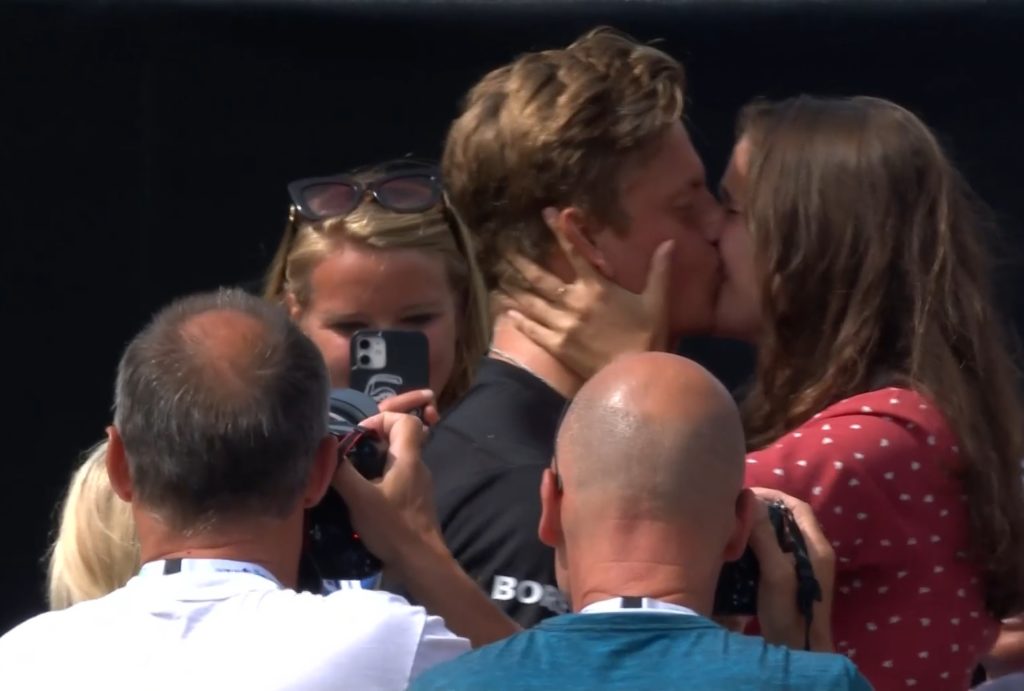
In his professional career, the 25-year-old has spent his time between No.175 and No.1499. In 2022, he was 27-13, mostly at Challenger 80 tournaments. He ended last season at 37-22 in Challenger 80 events and below.
Let’s stop here for a moment.
Tim van Rijthoven is proof that tournament organizers are always right to hand out wildcards to local talents. Some will crumble under the pressure of such a monumental gift and a head-to-head on centre court against the very best in the world, but others, like van Rijthoven, will rise to the challenge in an amazing way and write their very own, very rare, tennis fairy tale.

The win is actually this season’s second Cinderella story, but it’s probably the most surprising and moving.
You’ll recall that Thanasi Kokkinakis won it all in his hometown of Adelaide. He was also 25 years old.

Kokkinakis, a two-time boys’ Grand Slam finalist, was even more promising than van Rijthoven. He climbed to No.69 by the time he was 19, but unrelenting injuries kept him on the sidelines for a number of years.
He was able to stretch his state of grace a few weeks longer and won the men’s doubles event at the AO with his friend Nick Kyrgios. He is currently World No.86.
Those are the tennis stories we love.
Van Rijthoven’s could have also been entitled David vs. the Goliaths or Tim the Giant Slayer.
You choose.
The Flying Dutchmen

What’s happening in Dutch tennis?
In recent years, the tiny enclave of 17 million inhabitants that lies between Belgium and Germany has produced two—and soon perhaps three—Top 100 players.
They are Botic van de Zandschulp and Tallon Griekspoor, who are respectively No.29 and No.61 in the ATP rankings, and No.106 Tim van Rijthoven (see above).

Four years ago, van de Zandschulp was No. 587. Since then, the 26-year-old has been solid and steady in his rise to the Top 30. As for Griekspoor, 25, he’s moved up about 100 rankings points in the last 18 months and should logically enter the Top 50 any day now.
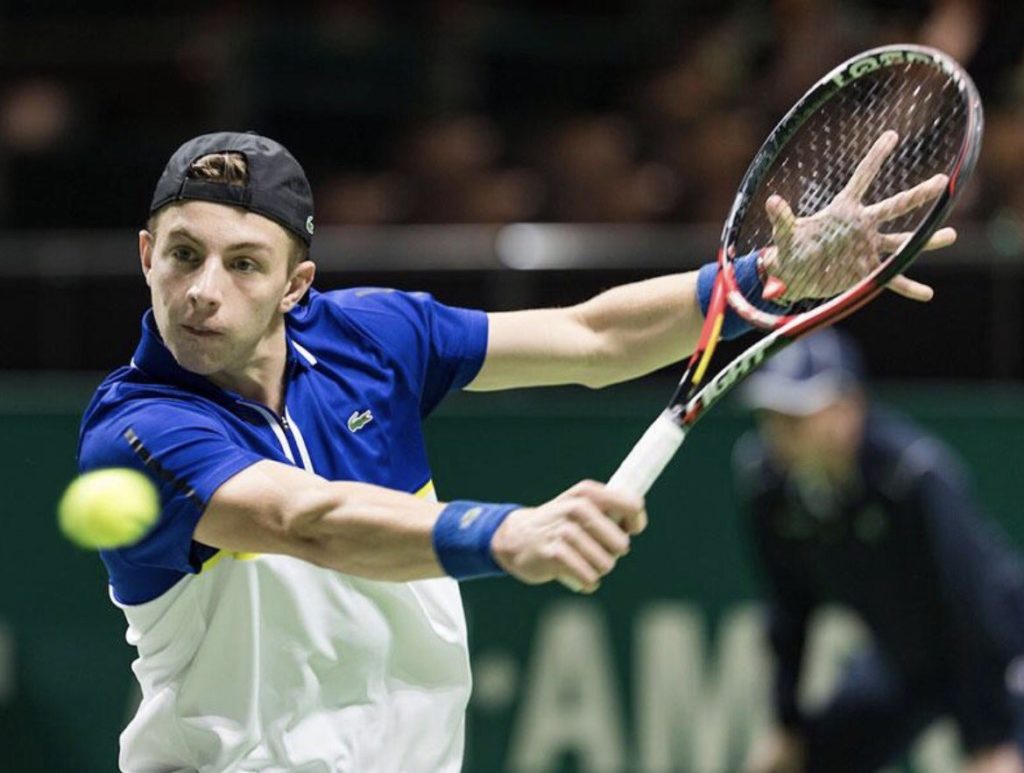
For years, the only Dutchman to make tennis headlines was Robin Haase. The 35-year-old veteran visited the Top 40 in 2017 and 2018.
Before him, there was Richard Krajicek, who won Wimbledon in 1996 and was World No.4 in 1999.
And before him, there was Tom Okker, the Flying Dutchman. In 1974, he battled in the US Open final and shot up to No.3.

Of course, there are no guarantees even one of the three will make Dutch tennis history, but they’ve already outshone their predecessors. Truth be told, tennis fans in the Netherlands haven’t had a lot to celebrate in the past five decades.
Fed Express: back on track in 2023
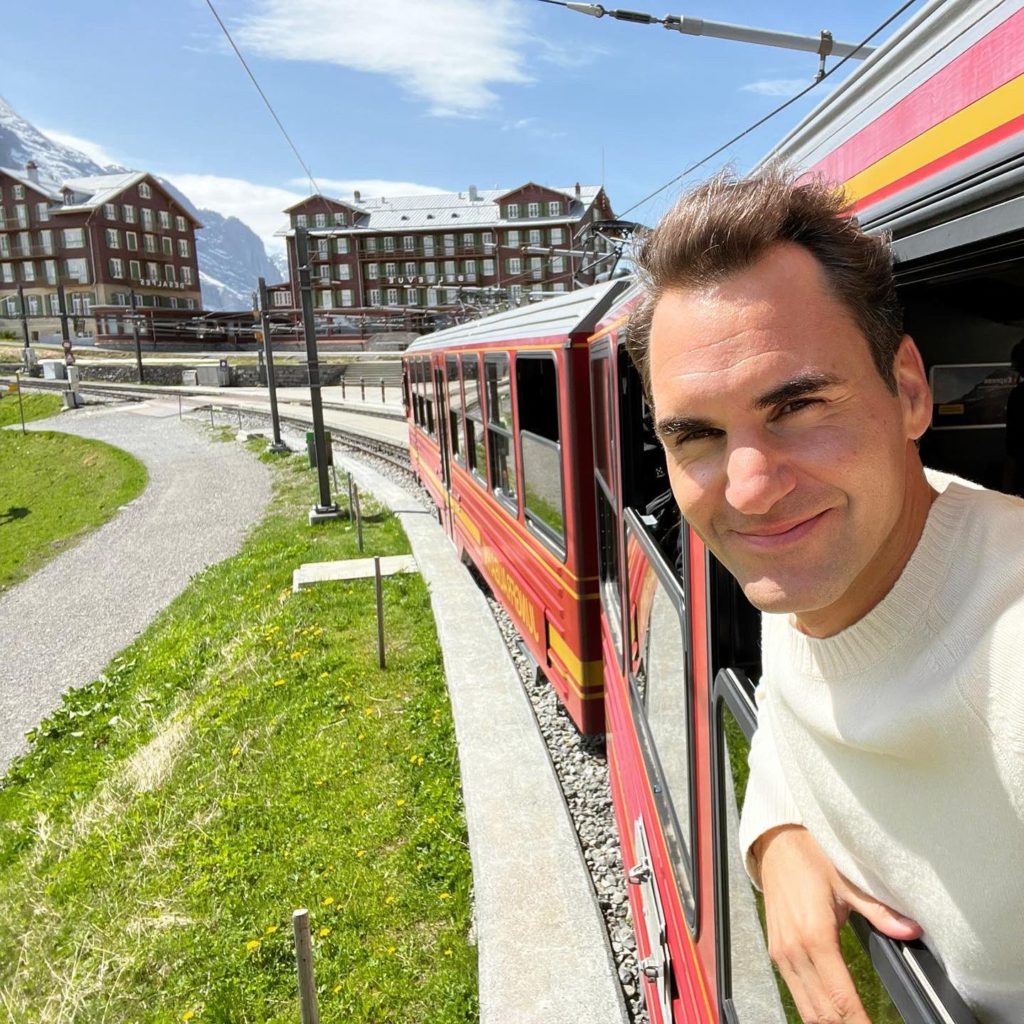
“Yes, definitely.”
That was Roger Federer’s response when a journalist asked him whether he’d be returning to competitive tennis.
What a relief.
Especially for me.
Federer’s (very) long absence, the rise of the young guns and the continued success of the biggest names in the game had me worried my favourite player would hang up his racquet this year.
Though, between you and me, retirement would be understandable at the age of 40 after three knee surgeries in 18 months. Not to mention the fact he hasn’t competed since Wimbledon 2021.
He told Simon Graf of Tages-Anzeiger, a Swiss-German national newspaper published in Zurich, that he hadn’t figured out how or where, but the idea was definitely to come back. Federer confirmed the news at the official opening of one of the 31 natural school playgrounds the Roger Federer Foundation is building in Switzerland.
That said, Fed will be back on the courts at Laver Cup, which he created five years ago, at the O2 in London from September 23 to 25. He also plans to be at the ATP 500 Swiss Indoors tournament in Basel from October 24 to 31. Between 2000 and 2019, he fought in 15 finals and lifted 10 winner’s trophies in his hometown. Still, I get the sense he’ll be there out of sentimental devotion and not a genuine belief he could win.

“The Laver Cup is a good start,” he said. “I don’t have to play five matches in six days. I will have to be able to do that in Basel. That’s why I have to prepare for it in practice. I’m curious myself what’s still to come. But I’m hopeful, I’ve come a long way. I’m not far away. The next three or four months will be extremely important.”
Email: privard@tenniscanada.com
Twitter: @paul6rivard
Follow all our Canadians in action here.

